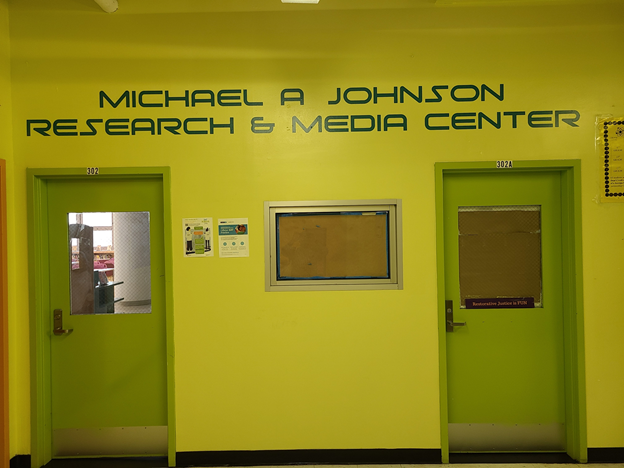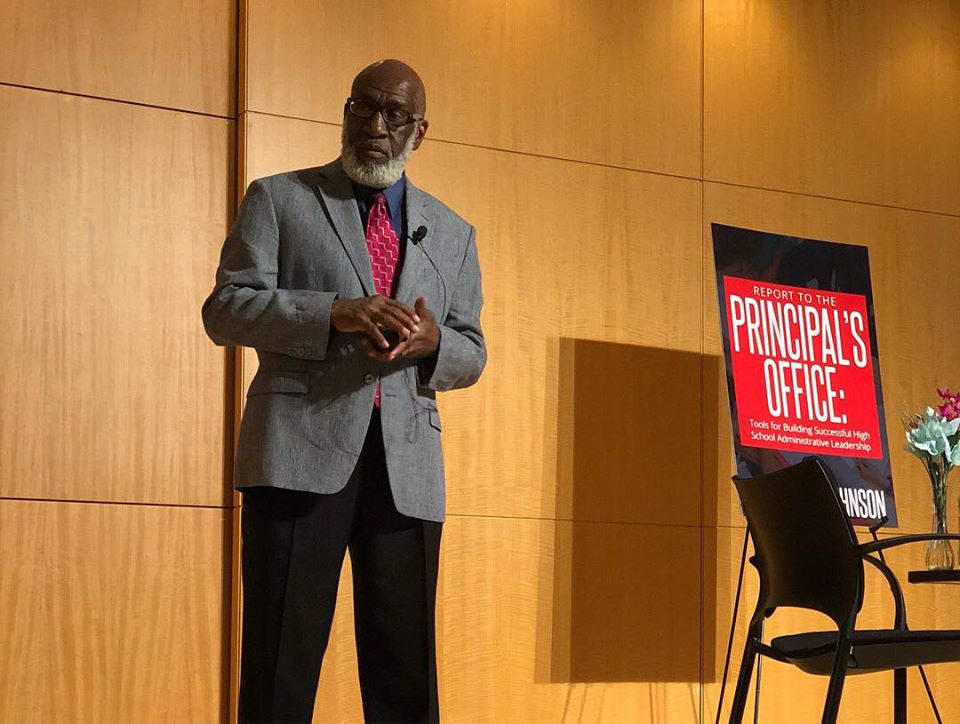Please, parents, first translate this for your child: One of the initial lessons you (the student) must quickly learn is that this is high school and therefore, there are no ‘group’ or ‘goodwill’ promotions to the next (10th ) grade, and no way of ‘aging’ into graduation. Merely being in the building for a 2nd year does not mean you are ‘officially’ (meaning based on your transcript) a “10th grader”. The requirements for high school grade promotion and ultimately graduation are the designated (required) classes and standardized exams (and in some schools, there are additional promotional/graduation requirement, e.g., community service or a senior project), that must all be performed, taken, completed, and passed to be promoted or to graduate! Those are the most basic requirements of a high school student.
In terms of high school success, the greatest help-mate or hurt-mate for incoming 9th graders is planning and organizational skills.
Source: “OK Parents: Some Basic Things for a Successful 2020 Covid-19 School Year (SY)” (https://majmuse.net/2020/08/23/ok-parents-some-basic-things-for-a-successful-2020-covid-19-school-year-sy/)
“High Performing Students: Get Better Organized And Therefore Get Better Grades! For all students, but especially middle & high school students, getting well-organized (early and consistently) is critical. And it is for this reason that they need a yearlong paper and electronic calendar based organizer-planner. Along with an excellent ‘filing’ (paper and electronic) system for all of the documents and numerous ‘papers,’ they will accumulate over a school-year. A separate for each class and subject areas note-taking (that turn into study guides) system. Online lessons could allow students to record or ‘cut and paste’ the written and ‘board-work’ parts of a teacher’s lesson into their class/study notes—and then re-watch and review the teacher’s presentation as many times as necessary. Students in every grade need subject/class specific-separate (color-coded) folders for returned & graded homework, essays, reports, quizzes, tests, assignments, and projects. Lack of organization is one of the significant ‘pitfalls’ for first-year high school students, a ‘fall and pit’ from which many don’t entirely escape. Over the years, whenever I had a meeting with the parent of an underperforming student in the principal’s office, without fail when the parent and I would go through the student’s school-bag and notebooks; we always found an unused or severely underutilized planning-calendar (which I gave to the student at the beginning of the year), a complete ‘mess’ of math, history, foreign language, etc. papers and notes thrown together in the same notebook, several single sheets of (some half torn) pieces of school-work papers, returned and graded exams from different classes, homework, essays and book reports (and yes, even some not turned in completed assignments and homework!) all mixed up; including some now mangled and out-of-date ‘notes to the parents’ that the parent never received! Getting and Staying Well-Organized is the First Step to Getting Good Grades!…”
The Competitive Culture of High Schools…
Now, some educational professionals and non-professional education adults might paint things like “competitiveness,” “ curriculum standards,” “academic achievement competition,” “class ranking,” and “standardized exams” in a not so positive light. This posting will not address that debate. However, I have observed, taught their children and worked with many of these individuals over the last 40 years; and I assure you that they often ‘preach and practice’ a very different storyline with their own children.
Educational institutions reflect the political values and principles of the societies (nations) in which they exist. In America, all public schools are (for better or worse) competitive organizations, and the best high schools (and their leaders) are those school’s that can make the school environment as minimally brutal and less competitively ugly as possible, without compromising their student’s ability to successfully negotiate and succeed with the adult life demands of a post-high school life. Good American schools oppose a culture of selfishness and ‘take-no-prisoner’ combative competitiveness; however, they cannot entirely escape from the societal-wide culture of ‘self-first’ damaging competitiveness and the allegiance to the endless pursuit of vulgar materialistic values. Like it or not our students will enter that world.
Therefore, we educators, with much difficulty, must prepare (starting in the 9th grade) every student to get the highest grades possible, in the most rigorous (toughest, most challenging) classes and classroom environments, equip them with the most robust academic transcripts, thus situating them to earn the most advantageous and prestigious graduation diplomas available; while at the same time, actually ‘educating’ them and helping them to be the highest compassionate, moral and ethical examples and expressions of humanity.
One of my definitions of a ‘progressive education’ is wanting students to progress academically (concepts and skills) so that they are able to survive and succeed in the world; while at the same time they progress toward becoming compassionate and committed agents-of-change in the making of a better and more humane world.
Parent warning: Be extremely cautious of professional educators or ‘non-educational political actors’ who advocate that: “students, just ‘do you’ and produce low-effort-low-quality school work; and we will accept your performing at whatever low achievement level”…Trust me, that approach is only applied when they are referring to other people’s children. Try going on social media and observe their (and the children of ‘celebrities’, including rappers) academically high performing/achieving children.
The Very Important Grade Point Average (GPA).
Source: The GLOSSARY OF EDUCATION REFORM (https://www.edglossary.org/)
“A grade point average is a number representing the average value of the accumulated final grades earned in courses over time. More commonly called a GPA, a student’s grade point average is calculated by adding up all accumulated final grades and dividing that figure by the number of grades awarded. This calculation results in a mathematical mean—or average—of all final grades. The most common form of GPA is based on a 0 to 4.0 scale (A = 4.0, B = 3.0, C = 2.0, D = 1.0, and F = 0), with a 4.0 representing a “perfect” GPA—or a student having earned straight As in every course. Schools may also assign partial points for “plus” or “minus” letter grades, such as a 3.7 for an A–, a 3.3 for a B+, and so on. GPAs may be calculated at the end of a course, semester, or grade level, and a “cumulative GPA” represents an average of all final grades individual students earned from the time they first enrolled in a school to the completion of their education.
In some schools, weighted-grade systems are used in GPA calculations, and they give students a numerical advantage for grades earned in higher-level courses, such as honors courses or Advanced Placement courses, or for completing more challenging learning experiences. In weighted-grade systems, an A in a higher-level course might be awarded a 4.5 or 5.0, for example, while an A in a lower-level course is awarded a 4.0 (yet weighted grading systems vary widely in design and methodology). A student’s GPA is often used to determine academic honors, such as honor roll, class rank, or Latin honors. GPAs have been one of several major factors used by colleges, postsecondary programs, and employers to assess a student’s overall academic record…”
Ok, so this is high school facts, not my personal political or pedagogical position on the GPA (in other words, don’t send me any emails about the political-incorrectness of the GPA system): The Grade Point Average (GPA) will designate a student’s “class ranking’ or ‘standing’ in relationship to their school-mates; it will also determine that student’s in high school and post-high school options and access to formal and informal academic and future career opportunities. The GPA competition starting line is the first semester of high school. Students who come into the school and “ace” (all A’s) all of their 9th-grade classes gain a tremendous advantage in the GPA race (and in most cases are very difficult to GPA catch and match through the end of the 12th-grade). First, because it places those ‘All A’s’ students on track to be ‘legitimate 10th graders’. Why is this important? High school class/course (required, electives and advanced classes) schedules are organized to accommodate the many students who actually pass their classes. All of the 10th-grade courses are arranged to fit a 10th graders schedule, as is the case with 11th and 12th-grade course offerings. For example, a student who fails 9th grade English and must retake it will have some scheduling problems (depending on the size of the school) because all of the 10th-grade history, math, foreign language, science, etc. courses are in alignment with 10th-grade English. Also problematic could be those students who fail the first or second part of a full-year course; there is no guarantee that the school will or even can offer the fall part 1 of the course in the spring (or vice versa). This could be a serious problem as the student moves up in grades and finds themselves ‘locked-out’ of many elective or advanced courses because they have limited scheduling flexibility.
Which brings me to my next point; the other reason for the ‘pass-everything’ with high grades approach is that those categories of students gain an advantage in being on track to take Advanced Placement (AP) college courses (which adds higher value points to their GPA); they are also first-in-line because of their GPA ranking for scholarships, college admissions, summer internships, special programs, principal and teacher’s letters of recommendations.
Because they are ‘on-track,’ these students will also have access to electives, honors, and advanced classes, which strengthens their transcript based on the factors stated earlier. Starting in the 9th grade, students must think of their transcript as a vital part of their college and scholarship(s) application process (it is!); but it is also a future job and career ‘resume’; and therefore, they must do everything possible to ‘protect’ the quality of that high school transcript and make it ‘beautiful’ and as powerful as possible; which means when presented, it tells a beautiful and powerful story about you.
And from: “Limited to No Access to a High School Academic, Career and College Guidance Counselor or Advisor During the COVID-19 SY?—Be Concerned Parents, But Don’t Panic.” (https://majmuse.net/2020/08/30/limited-to-no-access-to-a-high-school-academic-career-and-college-guidance-counselor-or-advisor-during-the-covid-19-sy-be-concerned-parents-but-dont-panic/)
“ …The starting point for post-high school guidance planning is the ‘walking-across-the graduation-stage’ day, then strategically ‘walking-backward’ to the 9th grade. Start the high school planning process at the 12th-grade graduation ceremony and then work backward by determining what the student must and should be doing, have (credits) earned, completed, and accomplished by the end of the: 12th, 11th, 10th, and 9th grades. Including summers and all school breaks (highly-effective-students take good advantage of ‘down-school’ time). A simple but essential objective that might elicit a: “Well, obviously!” (and if only it were universally followed by high school students!); students must start by successfully passing all of their classes with the highest grade possible. Nothing disrupts a post-high school career objective (internships, apprenticeship, college admissions, and scholarships) more than a failed or ‘minimally passed’ course grade. And to be honest, and possibly upset some of my public education colleagues, ‘summer school’ or any type of “credit recovery” program are, in most cases damaging to both a student’s transcript and their knowledge and skills bank. Trust me; it is never good or helpful when in an ‘asking for something’ essay or on some application, and a student is trying to ‘explain’ past failing or poor grades. The “I fell down, but I got up” narrative (and of course, that’s the story-line we utilize when that’s our only option) is terribly ‘over-hyped’ and particularly risky when you are competing with other students of similar social-economic profiles who never fell down academically!…”
The first year of high school is the opportunity to ‘reinvent’ or ‘upgrade’ (take it to another level) your K-8 self.
Some smart 9th graders (and I found this out when I spoke to their middle school principals) have used the transition from 8th to 9th grade as an opportunity to ‘reinvent’ themselves. You don’t have ‘history’ in your new high school, so turn that ‘not-knowing-you’ into an advantage. This COVID-19 SY teachers and school administrators are extra ‘stressed-out’; don’t add to their stress by making your ‘opening-appearance’ in high school a difficult or lazy academics one; turn a crisis disadvantage into a learning and achievement advantage by having a positive attitude, productive behavior (in school or online); and by doing extra studying and reading above what is required. Whether you are learning remotely, part or full-time physically in-school, make a good first scholarly impression (besides, you might need those administrators and teachers you are ‘annoying’ to write you a letter of recommendation later!).
As I advised one of my former students, who is now herself a great high school math teacher doing online remote teaching in Texas; to remind her less-than-cooperative students (because teenagers must be clear about your expectations and the consequences for them not meeting your expectations): “The COVID-19 crisis will someday end, and I will see you again in my classes and the school-building; you should think deeply about what that means!” Great teachers provide an abundance of efficacious compassion, and when necessary, also inflict the required amount of ‘loving-discomfort’!
9th-grader make your name known…for good and positive reasons!
It was not uncommon for me to have a conversation with one of my middle school colleagues, and the question would come up: “Oh, by the way, how is ‘so and so’ doing in your school?” Me: “Well, he/she is one of my 9th-grade warrior-champions!” The middle-school principal: “What, are you serious?”; and further, “That kid drove us nuts and refused to perform at the level of their potential!” Me: “I guess they were struck by the ‘seriousness lightning’ on the way to my school because that young lady/man is a model student, well-behaved, all serious business and on the honor roll!”
Having served as a PreK-12 superintendent, I would never say that the PreK-8 world does not require serious and hard work on the part of the student. But the reality of high schools is that we are the last “practice station” before the child enters the world of that cruel and unforgiving ‘real-world-rules.’ 9th-graders must start strongly focused and stay consistently strong. The standard model and path to 9th-grade success is ¼ preparation, ¼ attitudinal, ¼ study habits, and ¼ organizational skills. And if you desire to pursue a Science, Technology, Engineering and Mathematics (STEM) related post-high school profession; then you better take (and take serious), pass and master Algebra 1 as soon as possible!
Michael A. Johnson has served as a teacher, principal, and school district superintendent. He also served as an adjunct professor of Science Education in the School of Education at St. John’s University. He is the author of a book on school leadership: *Report to the Principal’s Office: Tools for Building Successful High School Administrative Leadership (https://majmuse.net/report-to-the-principlas-office-tools-for-building-successful-administrative-leadership/ ).





